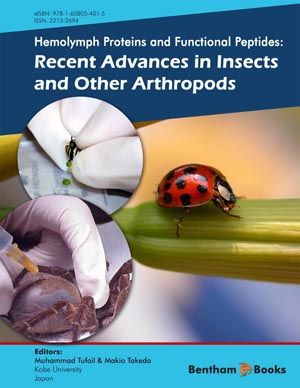Abstract
The insect brain peptides that induce target tissues to secrete steroid hormones, the ecdysones, are quite different from each other in peptide sequences and structures. Therefore, it is probable that related differences in specific receptors for the peptides exist on target organs, allowing for specific patterns of ecdysteroid synthesis by those tissues coordinated with regulation of metamorphosis. We identified and characterized an ecdysiotropic peptide from brains of Lymantria dispar that induced sheaths of testes to secrete ecdysteroid in vitro. The ecdysteroid in turn promoted synthesis of at least one peptide by fat body and/or testis sheaths that promoted sperm maturation and male gonadal imaginal disc development in vitro. We have cultured midgut stem cells and identified two peptidic factors controlling stem cell multiplication: the fast-acting brain peptide Bombyxin and the slower-acting fat body peptide, alpha-arylphorin. It is not known how these factors enter midgut cells, how they are processed, or how they incite stem cells to divide. We have characterized 4 differentiation-promoting growth factors, the MDFs, from culture medium and hydrolyzed hemolymph. They direct differentiation to normal and abnormal midgut cell fates. Internal [Ca2+] may be a second messenger for MDFs. Antibodies to the MDFs have revealed MDFs 1-4 in columnar cells and MDF4 in secretory cells as well. MDF2 appeared in the gut lumen, and MDF 4 is released from midgut secretory cells to both gut lumen and hemolymph.
Keywords: Neurohormones, ecdysteroidogenic peptides, second messengers, brain, role of testes, spermatogenesis, growth factors, fat body, midgut differentiation factors, Lepidoptera.






















